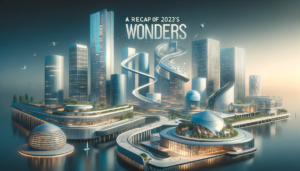In the realm of architectural design, the advent of Virtual Reality (VR) technology marks a significant leap forward, offering a new dimension of creativity and interaction. This transformative tool not only revolutionizes the way architects visualize and create, but also how clients experience and understand the proposed designs.
The Evolution of Virtual Reality in Architecture
The integration of VR in architecture is a relatively recent development, evolving from simple 3D modeling to fully immersive environments. It provides a bridge between conceptual designs and physical reality, allowing architects to transcend traditional limitations of 2D blueprints and basic 3D models. VR in architecture isn’t just a futuristic concept; it’s a present-day tool that’s reshaping the design process.
Revolutionizing Design Visualization
One of the most profound impacts of VR in architecture is the enhanced capability for design visualization. Architects can now construct digital models that clients can explore in a virtual space. This immersive experience goes beyond looking at a plan on paper; it lets clients walk through a building before the first stone is laid. This level of visualization aids in better decision-making, ensuring that the final structure aligns with the client’s vision and requirements.
The Interactive Design Experience
VR technology also introduces an interactive element to the design process. Architects and clients can collaborate in real-time, making modifications and seeing the results instantly. This interactive process streamlines decision-making and reduces the time and cost associated with iterative design changes.
Virtual Walkthroughs: The Client’s Perspective
Virtual walkthroughs are another key advantage of VR. Clients can take a tour of their future home or building, experiencing the space, layout, and design elements firsthand. This not only enhances client satisfaction but also helps in catching potential issues early in the design process.
Transforming Client Presentations
Presentations to clients are no longer confined to flat images or physical models. VR offers an interactive and engaging way to present designs. Clients can immerse themselves in the proposed space, gaining a deeper understanding and connection to the project. This method of presentation can be particularly persuasive and effective.
Challenges and Future Directions
Despite its many benefits, VR in architectural design is not without challenges. The cost of VR technology and the need for specialized skills to create and navigate virtual environments are considerations for many firms. However, as technology advances, these barriers are gradually diminishing.
The future of VR in architecture is promising. It’s poised to become more integrated into the design process, offering even more advanced tools for visualization and collaboration. As architects and designers continue to embrace these technologies, the possibilities for innovative and efficient design are boundless.









